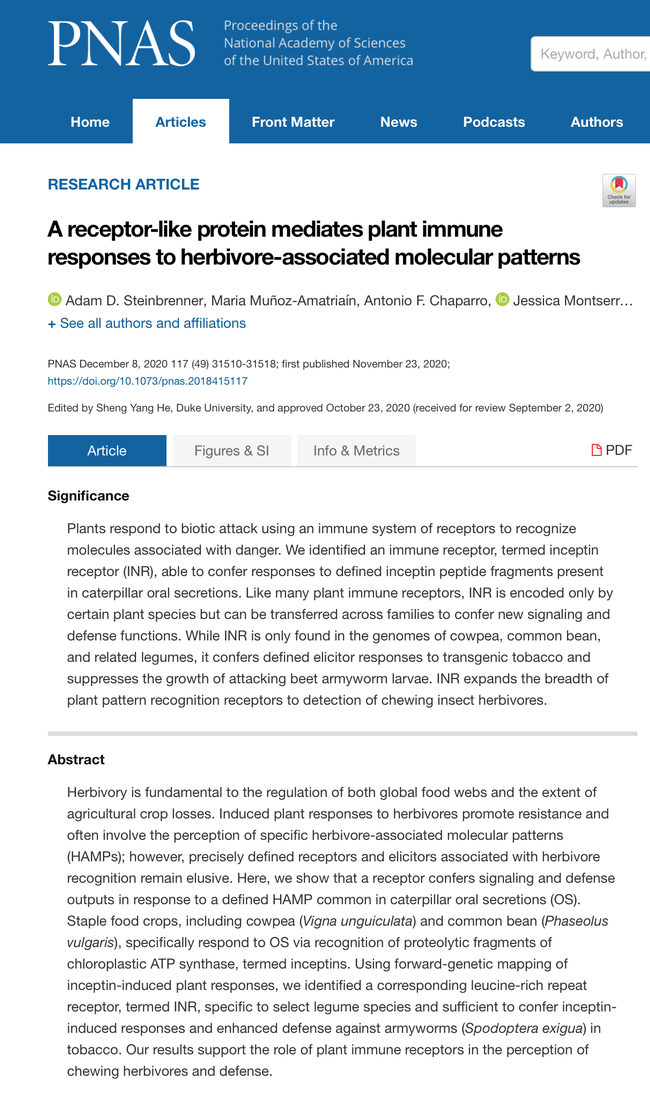- Author: Kathy Keatley Garvey
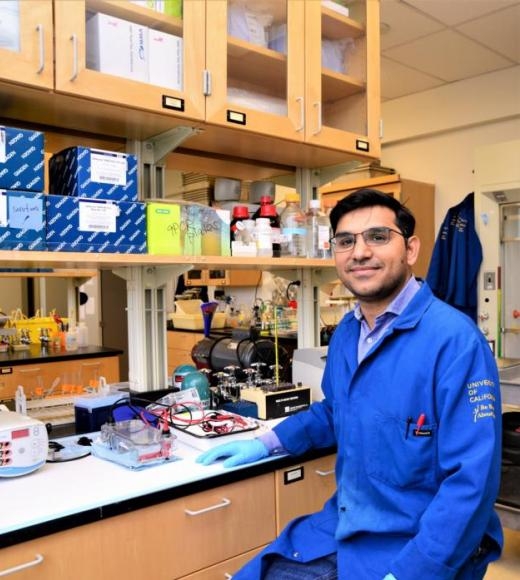
The seminars will take place at 4:10 p.m. on Wednesdays, beginning March 30 and continuing through June 1. The in-person seminars will be in 122 Briggs Hall. In-person seminars also will be presented virtually.
The Zoom link:
https://ucdavis.zoom.us/j/99515291076.
Wednesday, March 30 (in-person and virtual)
Ziad Khouri, international graduate student
Bohart Museum of Entomology, UC Davis Department of Entomology and Nematology
Title: "Scoliid Wasp Evolution and Some Adventures with Posterior Predictive Simulation"
Host: Lynn Kimsey, director of the Bohart Museum of Entomology and UC Davis distinguished professor of entomology
Wednesday, April 6 (virtual)
Makedonka Mitreva, professor of medicine and genetics
Washington University School of Medicine, St. Louis
Title: "Multi-omics Applications in Helminth Research"
Host: Shahid Siddique, assistant professor, UC Davis Department of Entomology and Nematology
Wednesday, April 13 (in-person and virtual)
Tobin Hammer, assistant professor, ecology and evolutionary biology
UC Irvine
Title: “Mystery of the Missing Microbes: Why Do Bees Keep Losing Their Symbionts?”
Host: Rachel Vannette, associate professor, UC Davis Department of Entomology and Nematology
Wednesday, April 20 (in-person and virtual)
Jared Ali, assistant professor of entomology
Pennsylvania State University, State College
Title: "Chemical Ecology of Plant Defense and Multi-trophic Interactions: Bad Bugs, Pungent Parasites and Toxic Travelers"
Host: Richard Karban, professor, UC Davis Department of Entomology and Nematology
Wednesday, April 27 (virtual)
Heather Bruce, postdoctoral researcher
Marine Biological Laboratory, University of California, Berkeley
Title: "Evolution and Development of Arthropod Appendages: Novelty and Homology"
Host: Xavier Zahnle, doctoral student, Jason Bond lab, UC Davis Department of Entomology and Nematology
Wednesday, May 4 (virtual)
Scott McArt, assistant professor of entomology
Cornell University, Ithaca, N.Y.
Title: "Pesticide Risk to Pollinators: What We Know and What We Need to Know Better"
Host: Lexie Nichole Martin, doctoral student, Rachel Vannette lab, UC Davis Department of Entomology and Nematology
Wednesday, May 11 (virtual)
Mostafa Zamanian, assistant professor, Department of Pathobiological Sciences
School of Veterinary Medicine, University of Wisconsin, Madison
Title: "Combing Target and Whole-Organism Paradigms for Anthelmintic Discovery"
Host: Shahid Siddique, assistant professor, UC Davis Department of Entomology and Nematology
Wednesday, May 18 (virtual)
Corlett Wood, assistant professor of biology
University of Pennsylvania, Philadelphia
Title: "The Conflict Beneath your Feet: Indirect Effects in Plant-Symbiont Interactions"
Host: Shahid Siddique, assistant professor, UC Davis Department of Entomology and Nematology
Wednesday, May 25 (in-person and virtual)
James R. Carey, UC Davis distinguished professor
UC Davis Department of Entomology and Nematology
Title: "The Conceptual Sweep of a Mathematical Discovery in Insect Demography: From Estimation of Medfly Population Age Structure to an Historical Analysis of U.S. Congress Incumbency Distributions, 1785-2000”
Host: Shahid Siddique, assistant professor, UC Davis Department of Entomology and Nematology
Wednesday, June 1 (in-person and virtual)
Isgouhi Kaloshian, Divisional Dean, Agricultural and Natural Resources
UC Riverside
Title: "Root-Knot Nematode Perception and Immune Signaling in Arabidopsis"
Host: Shahid Siddique, assistant professor, UC Davis Department of Entomology and Nematology
For any technical issues, reach coordinator Shahid Siddique at ssiddique@ucdavis.edu.
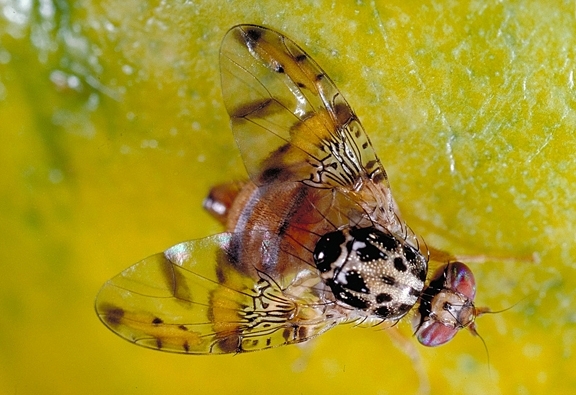
- Author: Kathy Keatley Garvey
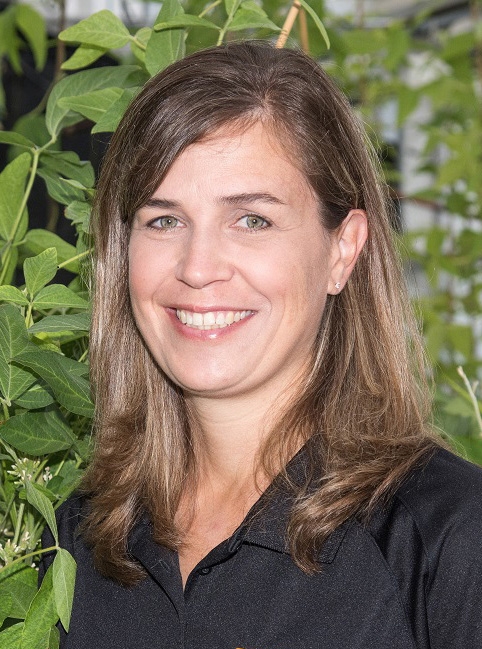
Her virtual seminar begins at 4:10 p.m., Pacific Time, on Wednesday, March 9, announced seminar coordinator and nematologist Shahid Siddique, assstant professor, UC Davis Department of Entomology and Nematology.
"Phytonematodes secrete a suite of effectors to modulate developmental programs of their hosts to cause disease," Mitchum says in her abstract. 'In this talk, I will highlight what we are learning about these effectors and the tricks they use to accomplish their goals."
Along with colleague Lisa Beamer of the University of Missouri, Mitchum is co-directing a four-year $1.2 million grant from the joint National Science Foundation and the U.S. Department of Agriculture National Institute of Food and Agriculture Plant-Biotic Interactions Program "to help combat a devastating soybean pathogen," according to a January 2022 news article in the Johnson City Press, Tenn. "The soybean cyst nematode, a microscopic roundworm, is responsible for annual crop losses of $1 billion in the U.S. alone," the news story relates.
Mitchum's research focuses "on molecular plant-nematode interactions with an emphasis on the sedentary endoparasitic cyst and root-knot nematodes," Mitchum says on her website. "Pathosystems include cyst (Heterodera glycines) nematode on soybean, cyst (Vittitadera zeaphila) nematode on corn, and root-knot (Meloidogyne spp.) nematodes on soybean, cotton, and peanut. We utilize the model plant Arabidopsis to accelerate our studies to dissect the molecular basis of parasitism by cyst (Heterodera schachtii) and root-knot nematodes. Our work addresses plant responses during compatible and incompatible plant-nematode interactions, the identification and functional analysis of nematode stylet-secreted effector proteins, and developmental reprogramming of host root cells via peptide mimicry and phytohormone manipulation. I work closely with plant breeders to develop high yielding, nematode resistant varieties. Current efforts are also focused on translating basic discoveries to develop novel approaches for nematode resistance in crop plant."
Mitchum received her bachelor's degree in biology in 1993 from the University of Puget Sound, Tacoma, Wash., and her master's degree in plant pathology from the University of Nebraska, Lincoln, in 1995. She obtained her doctorate in plant pathology, with a minor in biotechnology, from North Carolina State University, Raleigh, in 2001. Mitchum served as a postdoctoral fellow with the Developmental, Cell and Molecular Biology Group at Duke University in 2003.
For any seminar technical issues, Siddique may be reached at ssiddique@ucdavis.edu.
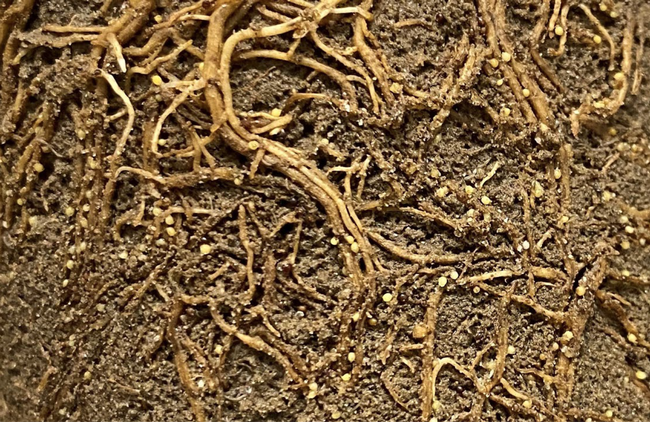
- Author: Kathy Keatley Garvey
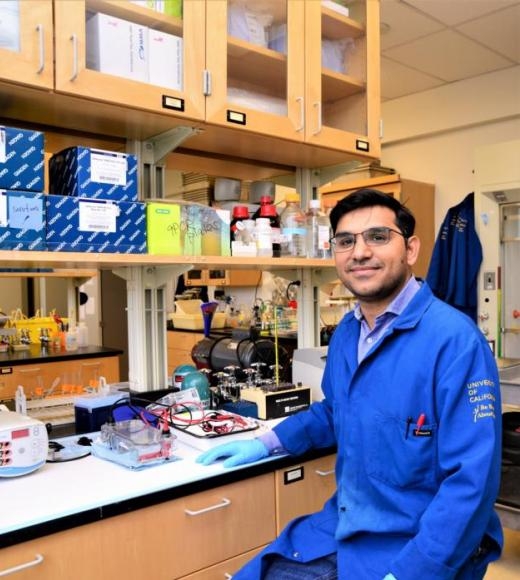
The display will include:
- What's in the jar?
- Celery infected with root-knot nematodes
- Tree swallow infected with Diplotriaena
- White-tailed deer eye infected with a Thelazia species
- Peach root infected with root-knot nematodes
- Mormon crickets infected with Gordius robustus
- Lettuce infected with root-knot nematodes
- Garlic damaged by Ditylenchus dipsaci
- Horse stomach infected with three parasites: Parascaris (roundworms), tapeworms, and botfly larvae.
- Grape roots infected with root-knot nematodes
- Sweet potato infected with root-knot nematodes
- Sugar beet infected with cyst nematodes
- Peach root infected with cyst nematodes
- Sugar beet infected with root-knot nematodes
- Ascaris lumbricoides (roundworm)
- Minke whale infected infected with ascaridoid nematodes
- Heartworm of dog
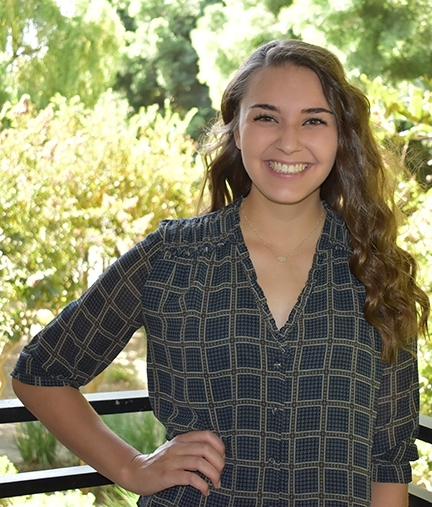
The event is set for 11 a.m. to 3 p.m. in the UC Davis Conference Center, 555 Alumni Lane. Admission and parking are free, but visitors must adhere to the COVID-19 Campus Ready guidelines. Masks will be required in accordance with campus policies, organizers said. Visitors can also sign up at the Conference Center for limited tours. Several museums or collections will be offering tours. (See news story)
"Plant-parasitic nematodes are destructive pests causing losses of billions of dollars annually," Siddique says on his website. "Economic, health, and environmental considerations make natural host plant resistance a preferred strategy for nematode control, but there are limitations to this approach. In many cases, the resistance conferred by resistance genes is partial, and some of the nematodes are able to survive. Similarly, nematode resistance genes are often effective against only one or a few species, whereas plants are exposed to several pathogens in the field. Another concern is the emergence of pathotypes that can overcome resistance. In view of all these limitations, it is important to identify additional mechanisms and tools that can be used to develop novel and sustainable approaches to the management of nematodes."
"Research in the Siddique lab focuses on basic as well as applied aspects of interaction between parasitic nematodes and their host plants," Siddique points out on his website. "The long-term object of our research is not only to enhance our understanding of molecular aspects of plant–nematode interaction but also to use this knowledge to provide new resources for reducing the impact of nematodes on crop plants in California."
Coomer, a second-year doctorate student, recently won a worldwide competition competition sponsored by the International Federation of Nematology Societies (IFNS) for her three-minute thesis on root-knot nematodes. She delivered her video presentation virtually on “Trade-Offs Between Virulence and Breaking Resistance in Root-Knot Nematodes.” She will be awarded a busary and plaque at the 7th International Congress of Nematology (ICN), set May 1-6 in Antibes, France.
Coomer earlier was selected one of the nine finalists in the 22-participant competition, vying against eight other graduate students from the University of Idaho, Moscow; and universities in England, Australia, Brazil, Ireland, Kenya, Belgium and South Africa.
The UC Davis Biodiversity Museum Day is traditionally held on the Saturday of Presidents' Day weekend. However, last year's event was virtual, and this year's event is centrally located in an exposition. For more information, access the UC Davis Biodiversity Museum Day website and/or connect with Instagram,Twitter, and Facebook.


- Author: Kathy Keatley Garvey
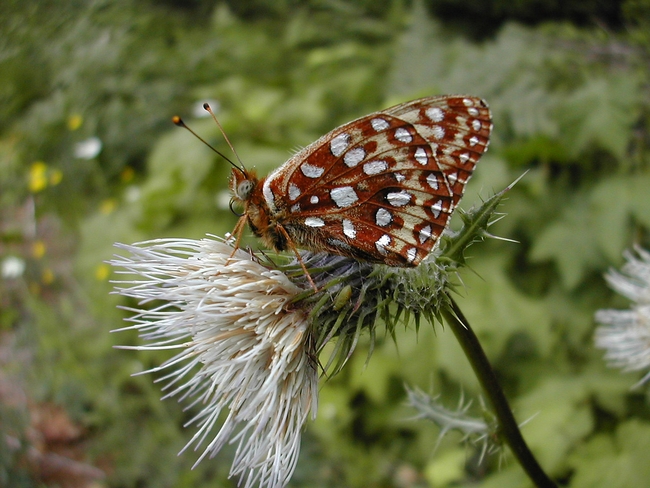
Her seminar, open to all interested persons, begins at 4:10 p.m., Pacific Time. The host is Emily Meineke, assistant professor of urban and landscape entomology.
The Zoom link:
https://ucdavis.zoom.us/j/99515291076
"Key to protecting biodiversity in an uncertain future is understanding how populations will respond to future environmental change and incorporating this information into conservation strategies," Henry says in her abstract. "In this talk I will focus on 1) how changing precipitation regimes affect the phenology and population dynamics of subtropical species 2) the need to maintain historic disturbance regimes to increase population resilience to catastrophic hurricanes and 3) the importance of careful assessment of whether conservation strategies are working as intended. My studies of endangered butterflies and their host plants highlight mechanisms that link species life history to climate change responses and provide a framework for developing conservation strategies that are rooted in basic ecology."
Her research topics include the Oregon silverspot butterfly (Speyeria zerene hippolyta), a threatened butterfly on the Oregon coast. She was featured in an Oregonlive.com news article, July 17, 2021.
"The silverspot once ranged from the Long Beach peninsula in southwest Washington to northern California," wrote Quenton Smith of Oregonlive.com. "But when it was first listed as endangered in 1980, its only known location were on two 'salt-spray' meadows overlooking the ocean near Rock Creek south of Yachats."
"Wild populations were subsequently discovered nearby at Brays Point, and on Mount Hebo, Cascade Head and the Clatsop Plains south of the Columbia River. Over the years the butterfly disappeared from the Clatsop Plains and Long Beach peninsula."
The Oregon silverspot once inhabited "suitable coastal habitat from northern California, through Oregon, into southern Washington," according to Wikipedia. 'It can now only be found in the wild at a few remaining sites in California and Oregon.] Conservation sites include Cascade Head and the Rock Creek Wilderness in Oregon. The butterfly can also be found at Mount Hebo and Clatsop Plains in Oregon and at Lake Earl in California."
On her website, Henry relates: "My research focuses on how rare species populations respond to environmental change – whether management or environmentally driven – and how to convert this knowledge into successful management strategies. To answer these questions, I use detailed natural history observations, local and landscape-scale experiments, and quantitative population models. In all of my work, I collaborate closely with land managers to answer questions that directly fill knowledge gaps that impede on the ground decision making. These collaborations allow me to directly translate my research results into improved conservation plans that increase the probability of successful endangered species recovery."
Henry obtained her doctorate in biology, ecology and evolution, from North Carolina State University, specializing in conservation and population biology. She wrote her dissertation on "Disturbance and Conservation of At-Risk Butterflies." She holds a master's degree in environmental science from WSU, where she specialized in conservation and restoration ecology. Her thesis: "A First Step Toward Successful Habitat Restoration and Reintroduction: Understanding Oviposiition Site Selection of an Imperiled Butterfly, Mardon Skipper." She is an alumnus of Willamette University, Salem, where she studied biology and Spanish.
"As my dissertation concluded, I secured funding from both the National Science Foundation and Everglades National Park to continue my research evaluating the interacting effects of multiple disturbances on population dynamics," Henry writes on her website. "In early 2021, as my previous funding was wrapping up, I was recruited back to Washington State University to lead a research effort that aims to evaluate the effectiveness of different management strategies for Oregon silverspot butterflies."
Nematologist Shahid Siddique, assistant professor, UC Davis Department of Entomology and Nematology, coordinates the weekly seminars. For any technical issues regarding the Zoom seminar, contact Siddique at siddique@ucdavis.edu.

- Author: Kathy Keatley Garvey

His seminar, to be both in-person and virtual, begins at 4:10 p.m., Pacific Time in 122 Briggs Hall. The Zoom link is https://ucdavis.zoom.us/j/99515291076.
"From the moment of initial encounter with an insect herbivore, a suite of inducible plant defenses are triggered; however, the molecular mechanisms for recognition and response are not highly studied," Steinbrenner writes in his abstract. "Specific molecular patterns from insects can serve as elicitors of defense responses on host plants, but precise receptors mediating such responses have remained elusive. We recently identified a cell surface receptor, Inceptin Receptor (INR), which detects a set of ubiquitous peptide fragments found in the oral secretions of Lepidopteran larval herbivores. INR is specific to select legume species and may structure insect host range across this plant family. We hypothesize that INR serves as a recently evolved and highly potent mechanism to perceive a specific danger signal, above and beyond cues associated with generic tissue damage. I will discuss our recent transcriptiomic characterization of inceptin responses in bean and cowpea, highlighting strong anti-herbivore defense outputs which occur after inceptin treatment but not wounding alone. I will also compare plant responses to herbivory with well-characterized pathways mediating recognition of microbial pathogens."
Steinbrenner focuses his research on cell and molecular biology, genetics and genomics, and plant biology. He holds a bachelor of science degree in biology from Tufts University (2010) and a doctorate from UC Berkeley in plant biology (2015). He was awarded a Howard Hughes Medical Institute Postdoctoral Fellowship of $180,000 in 2016 and studied with Eric Schmelz at UC San Diego.
The Steinbrenner lab studies the molecular bases of plant immunity to pathogens and pests. "We are specifically interested in recognition and signaling functions of cell surface receptors and evolutionary processes driving novel immune specificity," he says on his website.
Steinbrenner served as the lead author of a paper published Nov. 23, 2021 in the Proceedings of the National Academy of Sciences on how cowpea plants detect that they're being eaten by caterpillars. In the article, A Receptor-Like Protein Mediates Plant Immune Responses to Herbivore-Associated Molecular Patterns, scientists from the University of Washington and UC San Diego reported that the cowpea plants harbor receptors on the surface of their cells that can detect a compound in caterpillar saliva and initiate anti-herbivore defenses.
"Despite chemical controls, crop yield losses to pests and disease generally range from 20-30 percent worldwide," Steinbrenner related in a University of Washington news release. "Yet many varieties are naturally resistant or immune to specific pests. Our findings are the first to identify an immune recognition mechanism that sounds the alarm against chewing insects.”
Wrote UW science writer James Urton: "The team showed that, in response to both leaf wounds and the presence of a protein fragment specific to caterpillar saliva, the cowpea's INR protein boosts the production of ethylene, a hormone that plants often produce in response to munching by herbivores and other types of environmental stress. The protein fragment in caterpillar spit that elicited this response, Vu-IN, is actually a fragment of a cowpea protein, which gets broken down by the caterpillar as it dines on cowpea leaves." (See full article.)
Nematologist Shahid Siddique, assistant professor, UC Davis Department of Entomology and Nematology, coordinates the Wednesday seminars. For any Zoom technical issues, contact him at ssiddique@ucdavis.edu.
